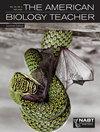All in Good Time
IF 0.3
4区 教育学
Q4 BIOLOGY
引用次数: 0
Abstract
Science is usually seen as a progressive enterprise, with one discovery leading on to the next and then the next. However, this progress isn't always as smooth as it's sometimes assumed to be. Take for example the case of thalidomide, that infamous drug from the 1950s. For those not old enough to remember the story, thalidomide was marketed as a sedative and treatment for morning sickness. While it was never approved for sale in the United States, it was considered so safe in Germany that it was sold as an over-the-counter medication. Then obstetricians began to see an increase in babies born with phocomelia or "seal limb," where the long bones of one or both pairs of limbs fail to develop correctly. These children had limbs that looked like seal flippers: hands or feet attached to the trunk. Phocomelia can be caused by a genetic abnormality, but it is rare. If an obstetrician saw a patient with this defect, it was the type of unusual event to share with a colleague, and the coincidence of one or more colleagues also recently seeing such children led to an investigation into why the abnormality was suddenly becoming more common. It turned out that almost every woman who gave birth to a baby with phocomelia had taken thalidomide early in pregnancy. In all, about 10,000 children, mostly in Europe, were born with the defect before the drug was taken off the market. In the United States, a physician at the Food and Drug Administration had questioned the drug's safety on the grounds of its nervous-system side effects during trials. This slowed its approval long enough that its other flaws were discovered before it could be distributed. The lingering effects of thalidomide are still seen in the now older adults who have lived their …一切都在美好的时光
科学通常被视为一项进步的事业,一个发现引领着下一个发现,然后是下一个发现。然而,这个过程并不总是像人们想象的那样顺利。以沙利度胺为例,它是20世纪50年代臭名昭著的药物。对于那些年纪还不记得这个故事的人来说,沙利度胺是作为一种镇静剂和治疗晨吐的药物销售的。虽然它从未被批准在美国销售,但它在德国被认为是非常安全的,因此被作为非处方药出售。然后,产科医生开始发现,患有先天性畸形或“海豹肢”的婴儿越来越多,即一对或两对四肢的长骨不能正常发育。这些孩子的四肢看起来像海豹的鳍:手或脚附着在躯干上。光秃可以由遗传异常引起,但很罕见。如果一个产科医生看到一个有这种缺陷的病人,这是一种不寻常的事件,应该与他的同事分享。一个或多个同事最近也看到了这样的孩子,这一巧合导致了对为什么这种异常突然变得越来越普遍的调查。结果表明,几乎所有生下患有光秃婴儿的妇女都在怀孕早期服用了沙利度胺。在该药退出市场之前,总共有大约1万名儿童出生时就患有这种缺陷,其中大部分在欧洲。在美国,食品和药物管理局(Food and Drug Administration)的一名医生在试验期间对该药的安全性提出了质疑,理由是它对神经系统有副作用。这拖延了它的审批时间,以至于它的其他缺陷在发行之前就被发现了。沙利度胺的影响仍然存在于现在的老年人身上。
本文章由计算机程序翻译,如有差异,请以英文原文为准。
求助全文
约1分钟内获得全文
求助全文
来源期刊

American Biology Teacher
BIOLOGY-EDUCATION, SCIENTIFIC DISCIPLINES
CiteScore
0.80
自引率
20.00%
发文量
108
期刊介绍:
The American Biology Teacher is an award winning and peer-refereed professional journal for K-16 biology teachers. Articles include topics such as modern biology content, biology teaching strategies for both the classroom and laboratory, field activities, and a wide range of assistance for application and professional development. Each issue features reviews of books, classroom technology products, and "Biology Today." Published 9 times a year, the journal also covers the social and ethical implications of biology and ways to incorporate such concerns into instructional programs.
 求助内容:
求助内容: 应助结果提醒方式:
应助结果提醒方式:


